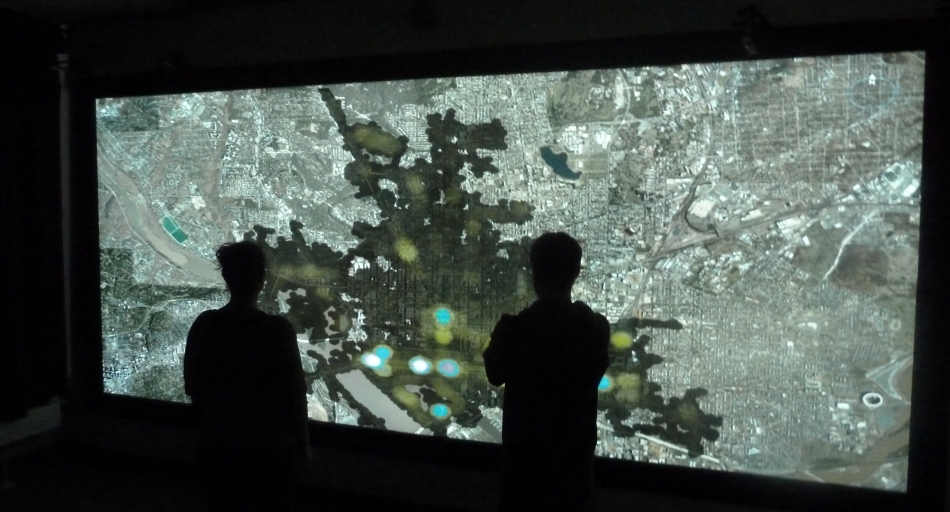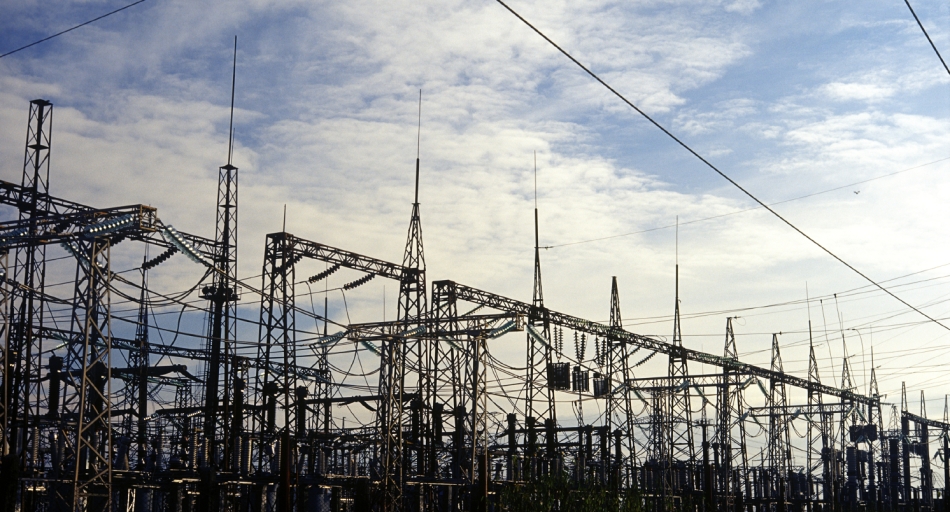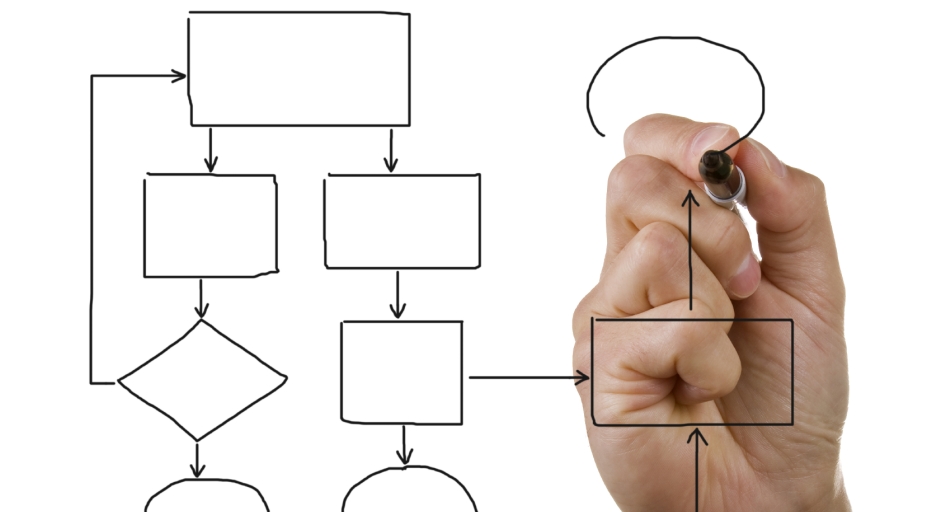Monthly Archives: January 2012
Visual Analytics

Visual analytics provides technology that combines the strengths of human and electronic data processing. Visualization becomes the medium of a semi-automated analytical process, where human and machine cooperate using their respective distinct capabilities for the most effective results. The user has to be the ultimate authority in giving the direction of the analysis along his or her specific task. At the same time, the system has to provide effective means of interaction to concentrate on this specific task. On top of that, in many applications different people work along the path from data to decision. A visual representation will sketch this path and provide a reference for their collaboration across different tasks and abstraction levels.
The diversity of these tasks cannot be tackled with a single theory. Visual analytics research is highly interdisciplinary and combines various related research areas such as visualization, data analysis, data management, data fusion, statistics and cognition science (among others). One goal of this project is to demonstrate that joining research efforts from these various fields can lead to novel, highly effective analysis tools, contributing solutions to the information overload problem in many important domains. Because visual analytics is an integrating discipline, the existing solutions in the area of critical infrastructures and crisis response will be integrated to support decision making in situations where multiple critical infrastructures are relevant.
Critical Infrastructures

Critical infrastructures are complex socio-technical systems. Their components and sub-systems are characterized by specific behaviors which result from the applied rules of physics, from technical specifications, and the established control regime. The resulting behaviors tend to be quite complex under normal and under exceptional conditions. Dependencies between critical infrastructures result in more complex behavior, including cascading failures and nonlinear effects. This holds for dependencies within the same sector and across different sectors. Power grids, telecommunication networks, transportation, food, public health, and logistic systems are tightly connected – but managed largely independently from each other. Failures in one network can propagate within this network; for example, blackouts in power grids, traffic contingencies in telecommunication or logistic networks. More significantly, they can propagate to other critical infrastructures (CI) within the same domain (power blackouts) and to depending CIs in other sectors (power blackouts or telecommunication failures affecting all other CIs). Risk in one network directly influences risk in a depending one. Whereas information management and control within one critical infrastructure is well adapted to the needs of risk management within its own network there is currently no appropriate approach towards a holistic risk management taking risks from different critical infrastructures into account.
Things are already complex today – and they will get even more complex in the years to come. New technologies and system structures are evolving:
- in the power sector regenerative and distributed energy production, large distances of power transport, power trading, smart metering and smart grids
- in telecommunication networks an integration of telecommunication, Internet, and mobile networks
- in logistics a significantly increased role of information and communication technologies
- In food safety and protection, logistics management, efficient distribution and interconnected production networks, lead to consumer items with ingredients from dozens of countries that can travel from field to table in only a few days with interrelated dependencies on computer networks, transportation networks, logistics, energy, and finance.
Information and Communication Technologies

Even more than today, information and communication technologies (ICT) will form the information and control backbone of all critical infrastructures. This generates new opportunities for their effective and efficient management. But at the same time it generates new vulnerabilities. A loss of ICT functionality will severely influence the operation of critical infrastructures. Until recently, large critical infrastructures operated on their own, independent information and control infrastructures. In the future this will be possible only in rare exceptions (for instance, for the European transnational power grid). Most critical infrastructures will rely on external telecommunication networks not under their own control. This generates new dependencies which need adequate treatment.
Information Management

A key issue for the management and control of such large complex critical infrastructures with their manifold dependencies is information management. For information management within one critical infrastructure the currently existing approaches have to be extended and adapted to the new needs in future networks. The usage of external ICT networks and the growing complexity of information to be managed are the main points. Much more information from different sources has to be processed in much shorter time intervals. Equally important,information from depending critical infrastructures has to be provided and processed in a form enabling holistic risk estimation and management.
Management and control of large complex critical infrastructures are done today by highly skilled and trained experts with significant and indispensable support from sophisticated highly adapted ICT systems. These systems provide three main functionalities:
- collection and processing of all incoming information from the own network and from related networks
- analysis of information according to highly adapted, special purpose built-in procedures
- presentation of information and results in an appropriate form to the human experts.
Information Modelling

A key issue for such an integrated approach is information modeling. Today’s simulation systems are based on special purpose data models based on the needs of the respective critical infrastructure. These models look different for power grids, for telecommunication systems, and for logistic simulators (and for other CIs). In order to manage and simulate dependent CIs an integrated model is needed allowing the integration of the different special purpose models. These integrated models have to be run on simulators which enable the simulation of complex system behaviors in dependent CIs. Different scenarios can be simulated as sequences of events and actions within one CI or crossing the borders between them.
Such federated simulations provide a new integrated component of visual analytics. Not just data but comprehensive simulations of complex system behaviors can be used as basis for complex but highly adapted analytical investigations and special purpose presentations to human decision makers. Novel visual analytics systems to be developed within the proposed collaboration will tightly integrate CI simulation and analysis with advanced visual interfaces to support effective decision making by the human.
Decision Making
 Even with sophisticated information and control systems, decision making in critical infrastructure management is a challenge. This holds for normal and near-normal operations, and even more for crisis management. The system behavior is too complex to be fully accessible by human intuition. Though human expertise is an indispensable pre-requisite to manage such complex systems, the analysis of system behavior and the prediction of changes need special purpose simulations which take the specific modes of system behavior into account. That’s why CI information and control systems include special purpose simulations (such as, for instance, N-1 contingency analysis in power grids). They are an essential pre-requisite to understand and manage the complexity.
Even with sophisticated information and control systems, decision making in critical infrastructure management is a challenge. This holds for normal and near-normal operations, and even more for crisis management. The system behavior is too complex to be fully accessible by human intuition. Though human expertise is an indispensable pre-requisite to manage such complex systems, the analysis of system behavior and the prediction of changes need special purpose simulations which take the specific modes of system behavior into account. That’s why CI information and control systems include special purpose simulations (such as, for instance, N-1 contingency analysis in power grids). They are an essential pre-requisite to understand and manage the complexity.
Today, these simulation systems are highly adapted to the specific domains. They are based on the assumption to completely know the state of their critical infrastructures. Both assumptions are not adequate for dependent critical infrastructures with external ICT systems. They are not suited for holistic risk management in such dependent networks of networks. What is needed is an integrative information management with federated simulations bringing the different system behaviors together.
Project Description
The goal of VASA (Visual Analytics for Security Applications) is to apply visual analytics to disaster prevention and crisis response, with a focus on critical infrastructures in logistics, transportation, food safety, digital networks and power grids at the national levels. The connectedness and dependency of these critical infrastructures make the problem of monitoring and understanding their functioning and dependencies one of the most complex analytical tasks faced by our societies. Their proper functioning is crucial for the well-being of the population, economic viability, and most of all to prevent loss of life.
Visual analytics is the science of analytical reasoning facilitated by interactive visual interfaces. It provides technology that combines the strengths of human and electronic data processing enabling a semi-automated analytical process, where humans and machines cooperate using their respective distinct capabilities. The VASA project proposes the application of visual analytics to the problems of monitoring and understanding critical infrastructures, cascading infrastructure effects, and to the management of crisis response. While, for example, there exist detailed models for individual types of infrastructures such as electric power grids, these do not encompass the various interconnections and interdependencies one needs to be aware of to make risk estimation decisions and for performing operational risk management. What is therefore required is a mechanism for conjoining the information available for individual infrastructure sectors and providing unified views and analytical tools for planning and decision support.
VASA is conceived as a three-year German-US collaboration project from science through prototypes and demonstrations to evaluations for transitions into practice which leverage other investments from both countries.
Universität Konstanz
The Data Analysis and Visualization Research Group (DBVIS) at the University of Konstanz focuses on delivering innovative and high quality research in the fields of Information Visualization, Knowledge Discovery, and Visual Analytics. The research at the University of Konstanz includes all aspects of the data analysis process including the development of novel visualization, interaction, and data analysis techniques. A major issue is to develop scalable visual analytics techniques that tightly couple automated and visual techniques in order to support decision making in large and complex information spaces. In this context, the DBVIS group proposed a number of sophisticated techniques for various application scenarios. For instance, the group successfully developed techniques to monitor high volume data for network security, techniques for the analysis of news streams, and, in collaboration with the University of Charlotte, visual analytics techniques for multimedia data streams. The group has unique competencies, demonstrated in numerous top-class conferences and journal publications.
Fraunhofer IGD
Fraunhofer IGD (Institute for Computer Graphics Research) is one of 60 research institutes of the Fraunhofer-Gesellschaft. The institute focuses on applied research with the aim of innovation in computer graphics by making the results of basic research available for applications. Through this transfer of knowledge from research to practical applications the IGD contributes to the furthering of technology in European trade and industry.
Fraunhofer IGD focuses on the development of product prototypes (hard- and software) and the realisation of concepts, models, and solutions for computer graphics and its adaptation to specific application requirements. The R&D projects are directly related to current problems in industry, trade, traffic, and services. For the implementation of these projects the departments of IGD have developed excellent competencies in Computer Graphics and its applications. An important research area is information visualisation and Visual Analytics, with a focus on the interactive and semantics-based visualisation of decision-critical information, as well as solutions for the financial industry.
Fraunhofer IAIS
Fraunhofer IAIS (Institute for Intelligent Analysis and Information Systems) is one of 58 research institutes of the Fraunhofer Society. With its workforce of nearly 280 employees, Fraunhofer IAIS combines the competences and scientific qualities of all engineering disciplines – especially informatics, and mathematics, natural sciences, business economics, geo and social sciences – with profound industry expertise. With a budget of approx. 20 million Euros the institute implements application solutions in the fields of machine learning, multimedia pattern recognition, visual analytics, process intelligence, preventive security, adaptive robotics and cooperating objects.
